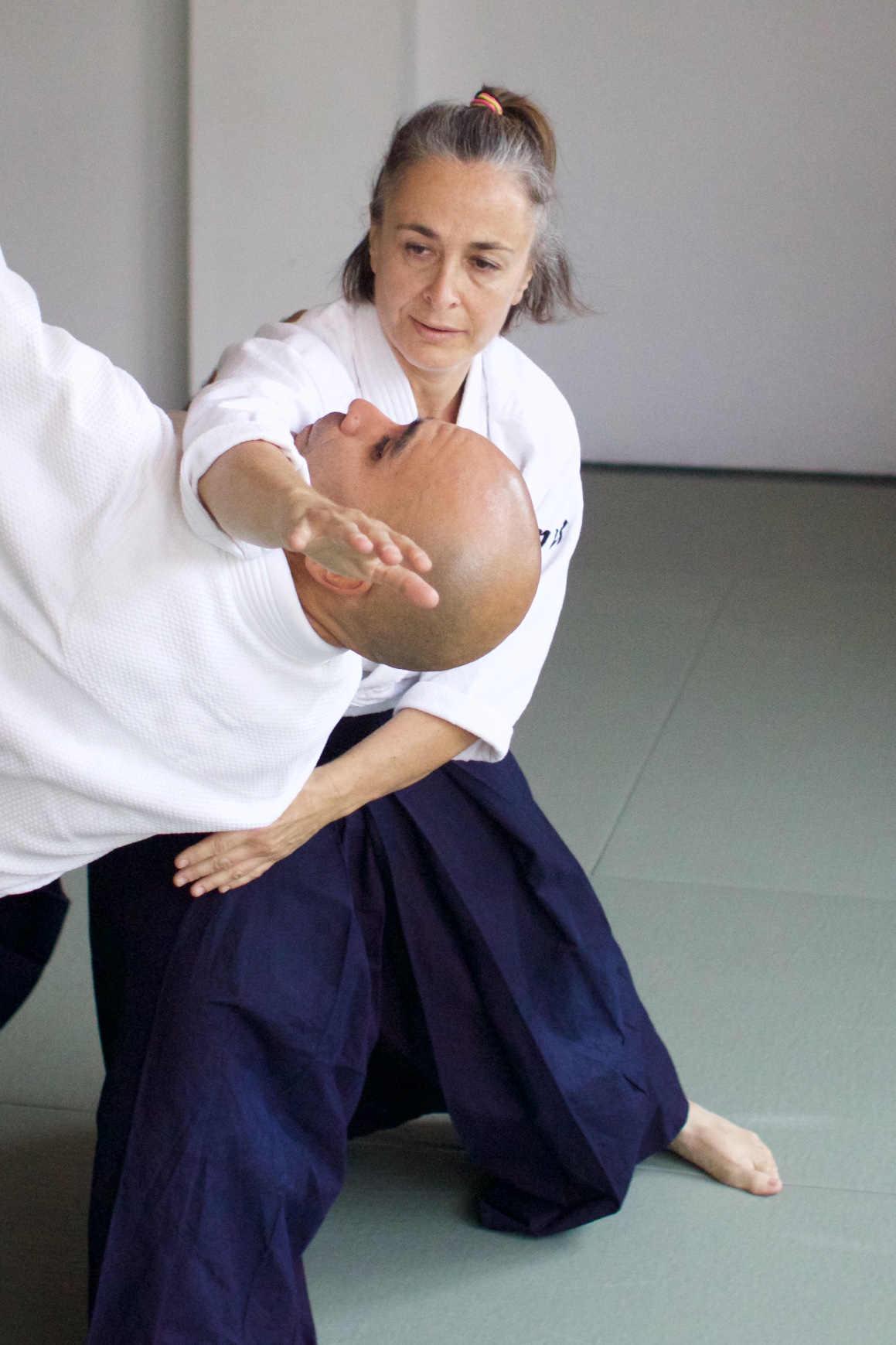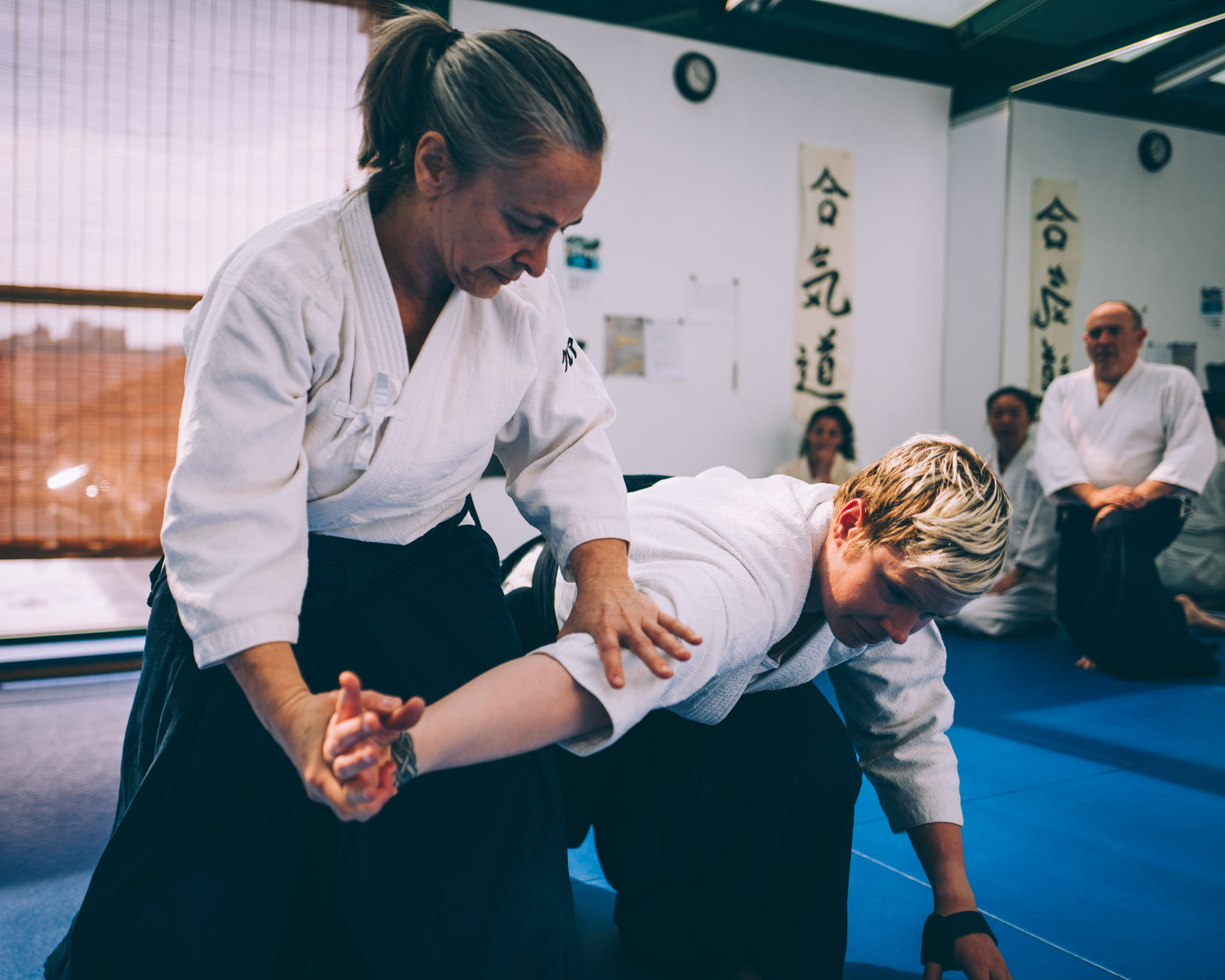Injuries are a part of aikido training. Over the years, I’ve gotten hurt and hurt people. I’ve never been comfortable with the way injuries are handled (or ignored).
I received my first serious injury at a seminar with Chiba Sensei in the early 1980s when I was perhaps 3rd kyu. He called me up for ukemi on an elbow hyperextension technique. Instead of going backward with the pressure, I went forward, intensifying the hyperextension. Chiba chuckled, kept doing the technique probably thinking I would figure out the proper ukemi (I didn’t) and damaged both of my elbows so badly that I grapple with the pain to this day.
Chiba pointed out to the class that I fell the wrong way and essentially injured myself. Later, he treated my injury by applying poultices to both of my elbows. Flattered by his attention, I felt pleased that I had been admitted to a kind of club, the injury club. Members of the injury club train hurt wrapped in braces and tape and are the real deal. Nothing short of broken bones can keep them off the mat.
My next serious injury was self-inflicted.
I broke my nose on the back of my partner’s head in a ryotetori technique. Lying on the stainless steel examining table in the ER, I snuck a look at my face in the table’s distorted reflection and was hit by a wave of nausea. Essentially, I had dislocated my nose on the back of my partner’s head, disfiguring my face. I realized aikido was dangerous.
A month or so later, I had a rhinoplasty to straighten my septum and took the opportunity to alter the shape of my nose. I came out of surgery with a new nose and a tremendous fear of getting hit in the face. The next injury came a couple of weeks before I was to take my second shodan test (I failed the first test, but that’s another story). While training in Northern California, I threw my partner in iriminage. My uke fell on my leg and severely bruised my shin. I was lucky my leg didn’t break, I’ve seen legs broken that same way more than once.
The next week at East Coast Summer Camp, I decided not to test because I didn’t want to be distracted by protecting my injury. I remember the looks of disdain from senior injury club members when they heard I wasn’t testing. After all, I was ambulatory. Allowing an injury to stop me from testing was grounds for expulsion from the injury club. It occurred to me that I was not very tough, that maybe I wasn’t a true martial artist.
Several years later I tore my ACL when an advanced student threw me fast and hard into a kotegaeshi leg sweep during freestyle group training at New York Aikikai. As I lay writhing in pain on the mat, dread overwhelmed me. I was out for nine months, had to have surgery and undergo extensive physical therapy.
It occurred to me that I was not very tough, that maybe I wasn’t a true martial artist.
The next injury was a shoulder separation. I was taking ukemi, in a group, and the person throwing was talking to me during the throw. He sped up and I was caught off guard and fell on my shoulder. I was out for six weeks.
I believe that the injuries I’ve described taking ukemi were the responsibility of my partner. I know the injuries were not premeditated but I also think seniors should be cognizant of skill level and size. In my experience, I have not seen any consequences happen to the person responsible for injuring their partner. The injury club has an unspoken vow of silence.
In the case my self-inflicted injuries, in each instance I was training distracted, tired or depressed. In the ensuing years, I try to take a read on my emotional and physical barometer before class. If I am too distracted, I simply do not get on the mat.
I have also hurt people. The injury code of silence has prevented me from knowing the extent of the damage I’ve done to others. Once I hurt someone quite badly. I was teaching and consciously trying to push my uke by throwing her faster and harder than I had before. While attacking me, my partner tripped and severely sprained her ankle, and had to crawl off the mat. I was horrified. I realized that I did not yet have the skill level to safely gauge how hard I could push someone.
Another time when I was teaching and pinning my uke in front of the class, the person refused to tap out. I felt challenged by his resistance and continued twisting into the pin until I heard the person’s shoulder snap. I allowed my ego to get the best of my judgment.
I’ve accompanied more than one injured person to the Emergency Room, taken people to doctor’s offices for post-op appointments, boycotted teachers because they hurt people, refused to take classes with teachers I decided were particularly brutal. I’ve heard the sickening snap of bone breaking, seen dislocations. None of my efforts have changed the culture of sanctioned abuse I’ve witnessed over and over in aikido.
Injuries are often accidental, but they are almost always someone’s responsibility.
We need to talk openly and often about why injuries happen and how we can prevent getting hurt and hurting our partners. How can people begin to take responsibility for their part in causing injuries? How do we process the shame and rage we feel as victims?
We can begin by telling people when we get hurt, walking away from an unsafe partner and using an appropriate amount of force when training with less experienced partners.
Injuries are often accidental, but they are almost always someone’s responsibility. In aikido, we have no rules, no competition and no existing framework for approaching a discussion about how and why injuries occur. Let’s start talking and break the injury club code of silence.


